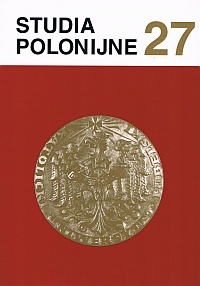Emigracja polska w Grecji po 1989 roku
Main Article Content
Abstrakt
In the 1980s and 1990s a Polish and Polonia community was established. It numbered several thousand people. The largest Polish population in Greece lived in Athens; there were, on the average, ca. 90 per cent emigrants. The social structure of emigrants varied. It included, among others, university graduates, physical workers, and secondary school alumni. It was mainly economic migration, although in Greece there were also political emigrants. They worked primarily in building jobs (men), or as domestic helps (women). Greece was also a transit country for Polish emigrants to overseas emigration: the United States, Canada, Australia, and to the African continent (RPA).
Polish communities lived mainly near a Polish church, situated in the centre of Athens. The first Polish priest was a Jesuit, Fr. Stanisław Mól. He arrived in Athens in August 1988. Very soon he made contacts with the representatives of the Greek Catholic and Orthodox Church, the Polish diplomatic corps, especially Polish emigrants and Polonia. In 1989 a two-person Polish pastoral centre came to existence, and in the end of the 1990s three persons.
Fr. Stanisław Mól organised a Polish school named after Romek Strzałkowski, the symbol of Poznań June 1956. Similarly like Polish pastoral care or the majority of emigrants, the school also functioned illegally in the light of Greek legislation, although it was tolerated by the local authorities.
There was Polonia press issued in Athens: „Kurier Ateński”, „Echo Tygodnia”, „Katolik − Emigrant Polski”. A few Polish organisations worked there: Biuro Pomocy Emigrantom Polskim [The Bureau of Assistance for Polish Emigrants], and Klub Polski [The Polish Club].

